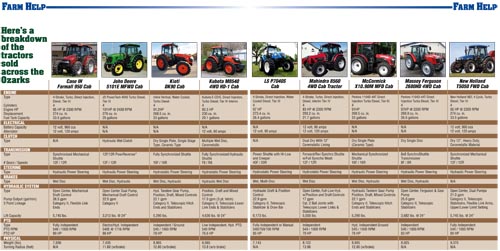Five financial tips to help keep your operation profitable
With today’s elevated commodity prices and profits projected for 2021, it remains important for farmers to monitor expenses and track operational margins. As the current market/futures price for crops like soybeans, corn, rice, cotton and wheat continue to rise, so does the cost of production.
The onset of COVID-19 impacted supply chains across the globe and as a result we have recently seen an increase in prices for our most important resources including seed, fertilizer and fuel.
With the cost of supplies increasing, so too does the cost of farm equipment resulting in higher expenses to produce crops.
In order to keep your farm in the green this year, consider these tips when looking at your monthly farm financials:
Understand Your Financial Landscape
When it comes to drafting a plan, it’s important to understand all the variables that influence your likelihood of success. You can identify and monitor these variables by regularly updating your records. It’s important to keep your balance sheet and income statement current.
Your working capital and equity position are important when making plans for your operation. Planning can help you forecast when to expand, purchase new equipment and land, as well as help you determine when to make capital improvements.
Know Cost of Production
You’ll want to understand just how much it costs to cultivate your crop. Calculate the cost by acre and by crop. Be sure to consider all factors that contribute to the overall cost including seed, chemicals, fertilizer, fuel and irrigation. Many farming operations will prepay or book inputs to help against price increases.
Understand Your Fixed cost
Equipment payments, land payments and labor cost are routine expenses. One way to identify how they contribute to your bottom line is to divide your total fixed cost per acre.
The calculation will reflect costs, over and above your variable production cost which can assist in planning crop-mixed plantings, the number acres needed to spread expenses, rental agreements and other variables.
Build Your Budget and Know Your Break-Even Price
Your banker or your accountant can work with you on cash flow projections. The projections will help determine your financing needs, control expenses, profit margins and price points to book crops. Remember to use realistic projections that include average crop yield history. You cannot go broke – booking a profit.
Customized Crop Insurance
Crop insurance can be a tool used to protect your operation and minimize exposure to risk. From crop disaster, hail/wind to revenue protection, an insurance plan can be customized for your operation.
There are a couple of things we know for certain: we cannot control weather, the prices for inputs, equipment or commodity prices; however, we can plan based on a budget with managed expenses and projections. Making a plan to withstand the rainy days helps your operation enjoy the fruits of your labor.
Chad Pittillo is Simmons Bank’s lending manager for Pine Bluff, Ark.






